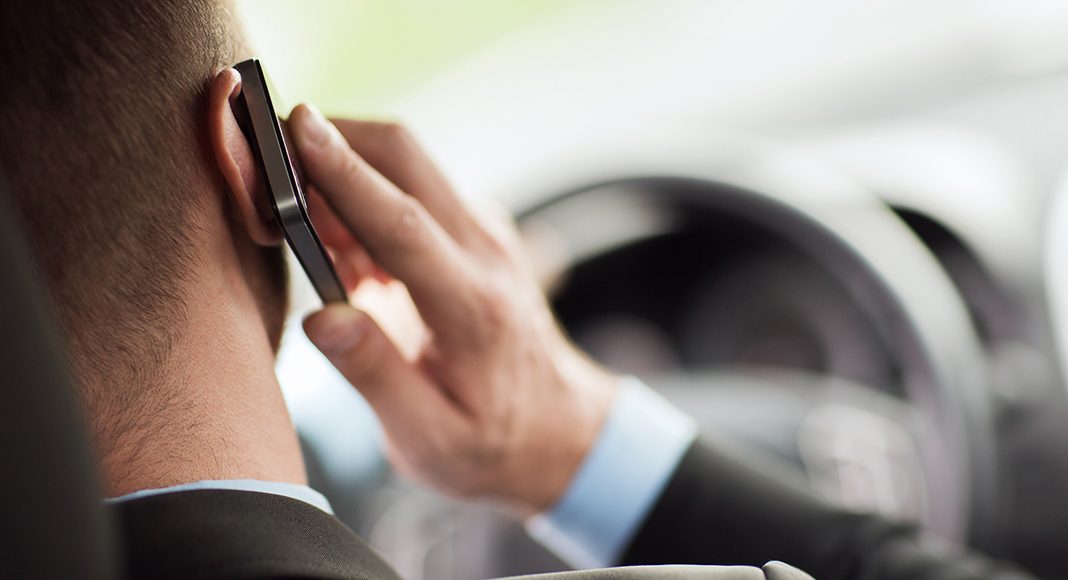“Managers should try to frame changes to policies as positively as they can.” That’s the best way of encouraging employee drivers to resist using phones at the wheel, according to Brittany Shoots-Reinhard, a research associate at the Cognitive and Affective Influences in Decision making (CAIDe) lab in the Department of Psychology at The Ohio State University.
Shoots-Reinhard said introducing company-wide phone bans while driving is not always the best option when attempting to tackle distracted driving during work time. She offers the following five tips to help managers encourage employee drivers to give up distractions behind the wheel.
1. Having procedures in place so that customers understand why their calls will not be answered by people driving, or having those calls redirected to someone else reduces pressure on drivers. A survey by Travelers showed that employers contribute to the decision to use phones while driving: nearly 40 percent of the people they surveyed felt pressured by their employers to be available 24/7 and over 40 percent used their phones for work while driving. “Therefore the one thing that managers can do that no one else can is communicate to their employees that they do not need to, and in fact should not, use their phones while driving. Full stop,” said Shoots-Reinhard.
2. Employees are likely to respond more positively to workplace pledges than punitive bans, so managers should try to frame changes to policies as positively as they can. “Banning cell phones completely may help to reduce company liability if an employee causes a crash while on the job, but I don’t know if such bans actually reduce crashes,” said Shoots-Reinhard. “Employers definitely want to avoid bans that prevent employees from doing their jobs.”
She suggested adjusting the work environment by introducing pledges, phone apps or phone settings that eliminate notifications and sending replies to customers to say that the driver will get in touch soon. “Rather than focusing on punishments for cell phone use, have people sign a pledge to not drive distracted and ask them to recruit friends and family to sign the pledge as well,” she suggested. “While they’re out there convincing others to not drive distracted, research suggests that they’ll also be convincing themselves.” Managers should make the pledge themselves so employees know the culture is company-wide and supported by management.
3. Apps that can monitor and reward good driving and coach poor driving can be helpful. And incentives can reward people who wouldn’t otherwise want to change their behavior. “In our partnership with The Risk Institute at The Ohio State University, we’ve come across some coaching apps (like eDriving’s Mentor) that are in line with what we would expect to work,” said Shoots-Reinhard. “Some mild competition might work, too. If people get private feedback about how they stack up to the rest of the company, that can be a huge motivator. The drivers doing well will want to stay on top, and the ones at the bottom might want to move up.”
She said that at least some drivers might not realize their driving is worse than that of their peers until they see the comparison. “This type of comparative feedback could help them see that they have some room for improvement,” she added.
4. “Do not disturb” settings are a promising solution, according to Shoots-Reinhard. She said that simply telling people to just not answer or look at their phones makes them have to do a lot of work resisting temptation, and they’ll still be distracted wondering who was calling. “The key is to find very simple, easy solutions because people don’t want to be even more inconvenienced and research shows that the best way to avoid temptation is to not encounter it,” she said. “With ‘do not disturb’ settings people do not have to consciously resist answering a call or reading a text or even remember to set it each drive. Managers can distribute work phones with these settings or apps already enabled and add apps that monitor for distraction as well as aggressive or other problematic driving habits.”
5. “Gamification” and “shamification” methods can incentivize better behavior and encourage drivers to resist distractions. “Distracted drivers tend to be overconfident in their ability to drive while distracted and they think other people are driving distracted a lot too,” said Shoots-Reinhard. “Even if managers are saying distracted driving is bad, if ‘everyone’ is doing it, drivers will feel less pressure to stop. The converse of that is that people don’t want to be standing out for doing something wrong. Messages targeted at drunk driving have used social pressure (e.g., ‘friends don’t let friends drive drunk’) and, psychologically, the same thing should work for distracted driving.”
eDriving’s Mentor smartphone app can help target distracted driving leveraging the effective behavior change principles Shoots-Reinhard highlights. Learn more about the Mentor app here.



















